[First time visitor? Coming here directly? Stop and learn about the Beyond Hartford, Beyond Cars series before reading on]
I’m not saying that a state park’s parking lot next to a closed landfill is the reason to visit Milford, but take notes on it while you’re here. You can do that without even parking in it.
A construction project at Silver Sands State Park began in 2018: new concessions building, restrooms, and lifeguard office. This was also a chance to reconfigure some of the parking, and while they did not reduce it from 713 spots to 100, which would be reasonable to me, most of the new spaces are grassed, not paved. If you want less flooding, use less pavement. The other benefit, in my mind, is that when we all agree that this amount of parking is unreasonable, it’ll be easier to convert the grassed section to simply be park, not parking.
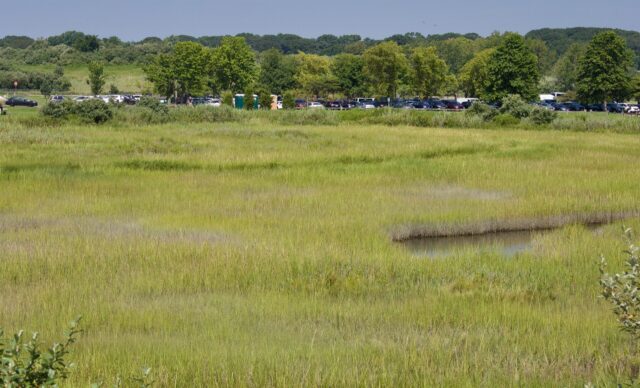
The lot’s also way the heck over there, and if you want to drive to this park, you can use the long pedestrian bridge from the lot to the boardwalk (unless you are using one of the reserved parking spaces). Hope you brought water and a compass for that trip. For some comparison, that’s nine or ten paved spaces along with the existing turnaround at Silver Sands, with all the remaining parking on the other side of wetlands, while the neighboring park — Walnut Beach — has oodles of paved parking spaces right up against the boardwalk. Oodles = just look at Google Map aerial view and see for yourself. The change from one park to the next is striking because suddenly, even though you’re on the same boardwalk, it feels much hotter. Why? You’re walking close to often idling vehicles parked right by the walkway, and also getting heat from the pavement. “Because that’s the way we’ve always done it” is never a sufficient reason.
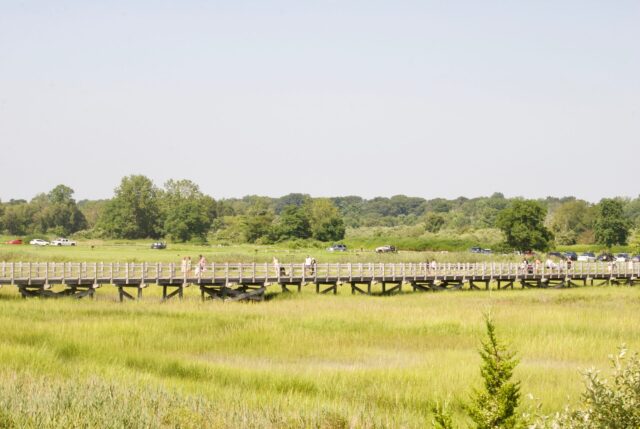
I will talk about things other than parking and transportation, but I need to explain why I was here on the weekend during peak tourist season: ParkConneCT. Unfortunately, the Silver Sands Shuttle does not operate on weekdays or off-season — both times I would have chosen for myself.
After not being able to use ParkConneCT at all last year for trips east of New Haven because the shuttle service did not play nice with Shore Line East’s too limited service (combined with Hartford Line not exactly meshing with Shore Line East schedule) I felt that I owed the program another chance.
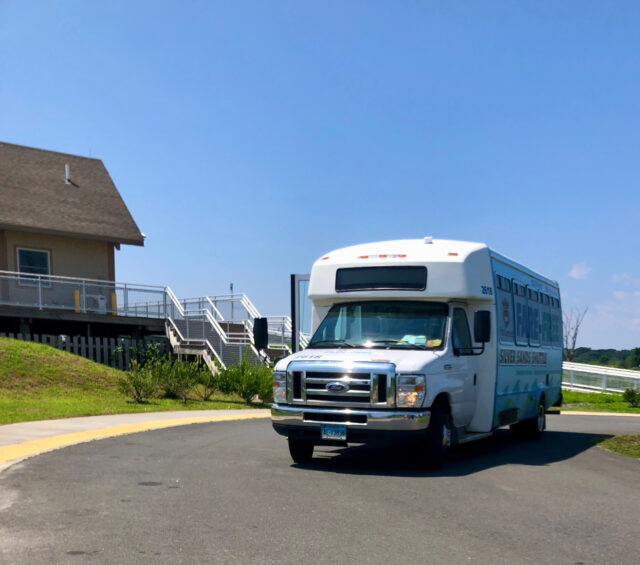
The positive stuff first: it got me where I wanted to go, for free, and dropped me off right at the boardwalk. The feeling of that is like riding a bike through city rush hour and leaving everyone in cars in your dust. The shuttle bus was clean, air conditioned, had seat belts, and the driver was cool.
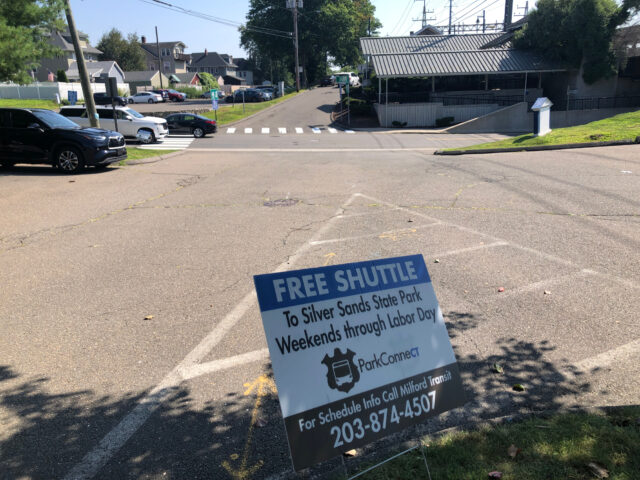
The less positive: I do not enjoy mysteries. There were three of these Free Shuttle signs in the train station parking lot, which indicated that I was in the correct lot, but there were no bus stop signs. None of the stops described on the map had signs– at least none that we passed. The document online with map and schedule was a few years old, so I was unsure if these stops or times were current. When the shuttle did not show up as scheduled, I called the number on the sign as I stood under a tree in this commuter lot — no benches, no bus shelter. People coming out of their cars looking at me like I was up to shady business for loitering in a commuter lot. Nobody works at Milford Transit except the drivers, I guess, on the weekend. Eventually, I was able to listen to a recorded description of the shuttle route and schedule, but it said this was for the 2021 season. The trip I am writing about here and now happened in 2023. I should also explain that at the time of the trip, the Silver Sands Shuttle was not appearing in the Transit App, so I could not track. I’m not going to be mad about a free shuttle being a bit off schedule — I just want some assurance that this thing exists and is indeed coming. There’s a difference between “looks like driver hit traffic or needed a rest stop” and “did this service expire?”. I could’ve sat on a bench across the street at the train station and eaten my snack. I am one impatient person; how would someone with other impatient people in their company manage this? How about someone who never takes public transportation and this is their first experience doing so?
After waiting about fifteen minutes beyond the time the shuttle was supposed to arrive, I began walking what was going to be a long, humid two mile trip. Luckily, just as I reached the sidewalk I saw the shuttle on its way, and saved myself annoyance and blisters. I had already walked from my house to the station in Hartford, was planning to walk around a lot by the water, then a bit in town, and then would be walking again from Hartford Union Station to my house. Adding another four miles to that would be unenjoyable, and this was supposed to be a relaxing day, even if I knew I would be writing about it.
The day I went was what most people would consider a perfect beach weather day, yet the shuttle was extremely underutilized. If the ParkConneCT people are running this program just to check off a box, then of course sharing my user experience won’t matter, but if they want to see more ridership there are basic things to consider: update the schedule info to reflect the season, include useful details like where exactly stops are or that riders should flag down buses, and find a way to communicate where shuttles are in real time. If a person can hail the bus anywhere in the vicinity of a stop, publicize that. Not every person who would use this service has a choice between shuttle and personal vehicle, but for those that do, you want to make it less of a hassle to use greener transportation than their own car.
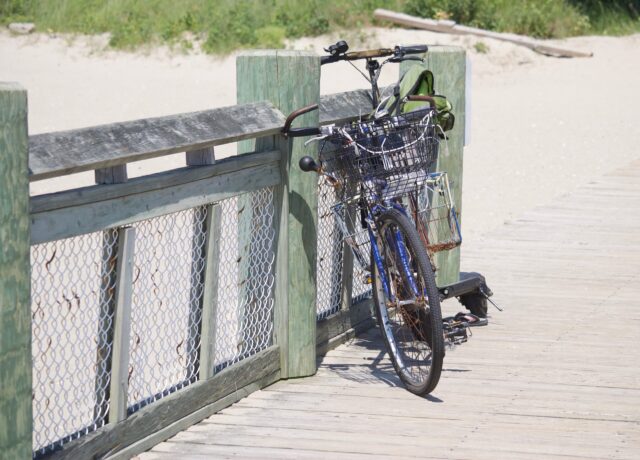
Anyway, more and more, I want to know why there aren’t bike rentals at all train stations and larger transit hubs. There are bicycle lockers, but if any rental options were available, they did not make themselves known to me.
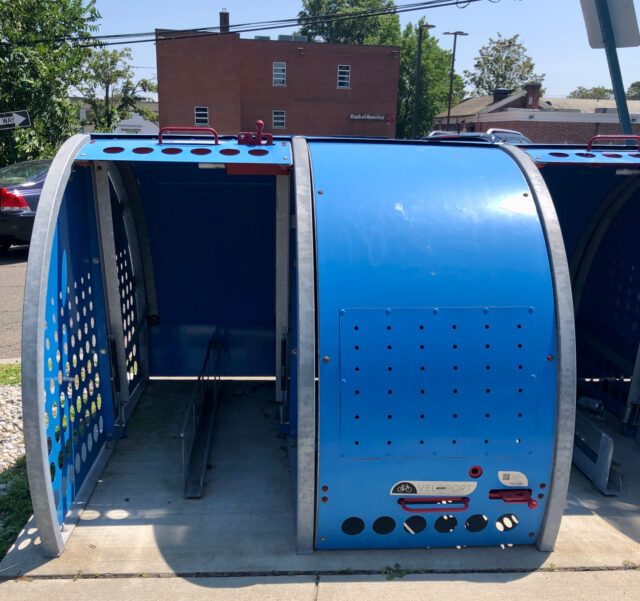
The East Coast Greenway goes through Milford, and some of it through Silver Sands State Park. Some of the roads in Milford are dangerous, but if coming from the train station, once you cross Route 162/Broad Street, there are many quiet roads to ride on and it’s fairly flat.
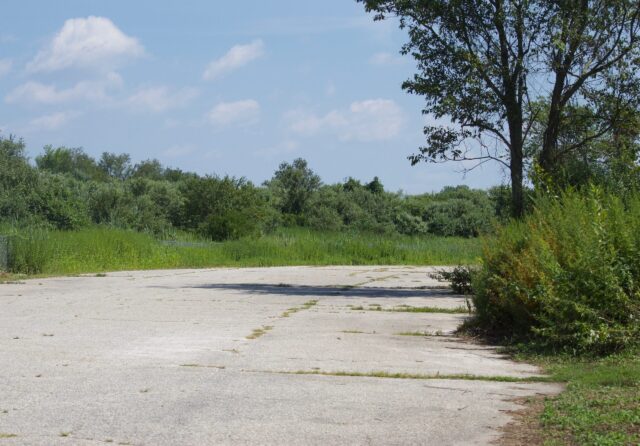
This is a car-free section of the East Coast Greenway in the park.
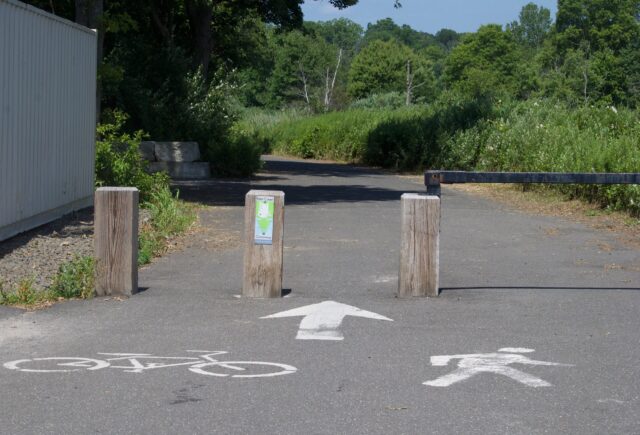
The construction project at Silver Sands has been an ordeal — some of which made for better results. I said construction began in 2018, but the process to get there started earlier when the 2012 Bond Commission allocated funds for design, and likely earlier than that.
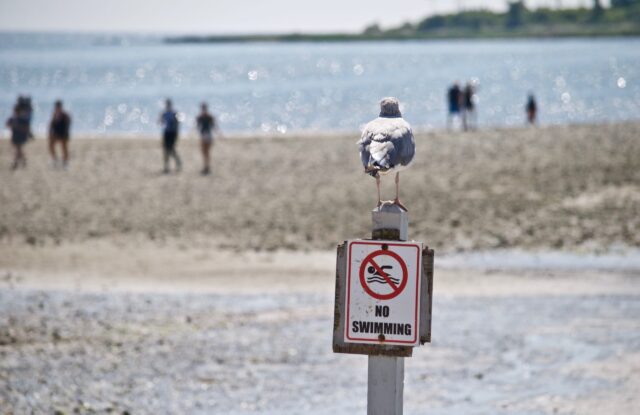
The physical work of construction finally began in 2018. In March 2019, two fires — at least one of which was intentionally set — destroyed the almost-completed new buildings, along with building materials in storage containers. It was only this past spring that the arsonist, who was involved in setting several other fires around the state, was given a five-month probation sentence.

Besides the waste of natural resources and that of workers’ time (who wants to see their efforts destroyed?), this meant needing to stop everything to check for environmental impact, clearing the debris, and then starting again. Over $3 million in damage on a project that was needlessly controversial from the beginning. Work did not restart until January 2020.
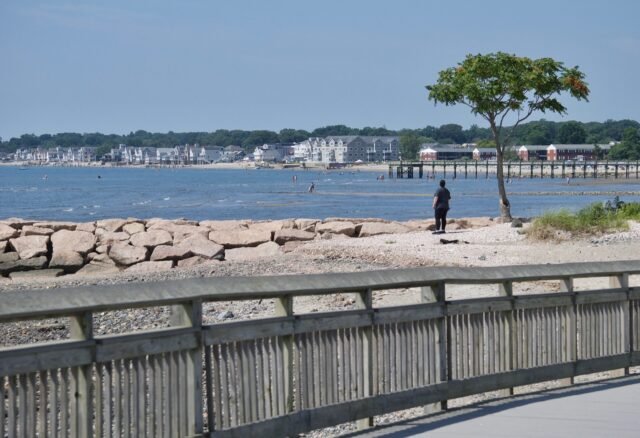
There were the standard attempts to prevent park improvements, including those coming from folks who wanted to keep a State Park as something only town residents could use. The funny thing is that some who opposed the project had a change of heart when they saw the results. If you follow stories about development, this is not surprising at all, but something reporters should be required to put in every news article in some way: listen for which project critiques are informed, and which are driven by a fear of change or attempt to hoard resources. (Some of the concerns were grounded, but many, not so much. At least one person wanted a wall to keep people out. What?!)
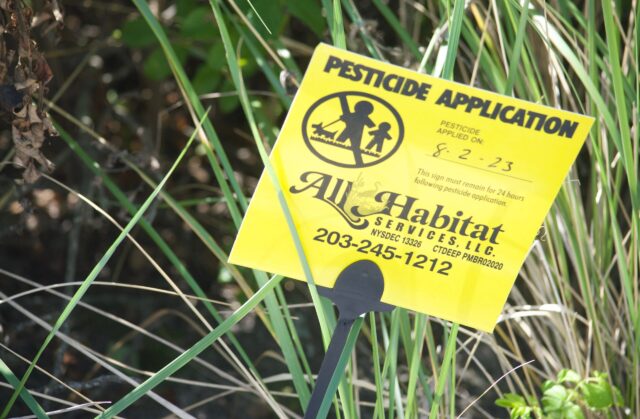
If resistance is truly about environmental impacts, we should be seeing robust pro-environmental actions taken elsewhere, such as banning all except ADA accessible parking from parks, such as making dramatic improvements to the public transportation system, narrowing roadways (Route 1 through Milford has 5 lanes. Why?) . . . make changes that are not simply about keeping people out.
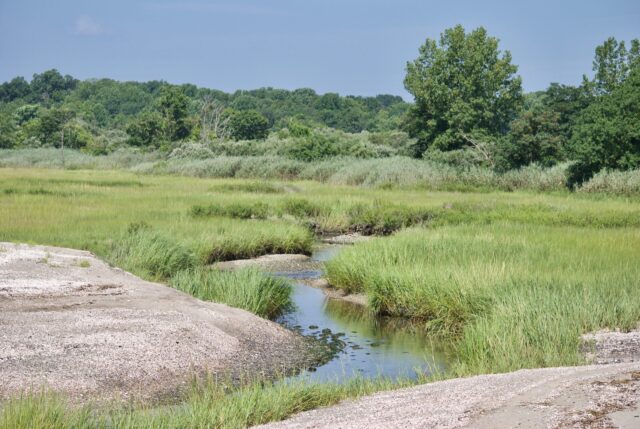
A 1955 hurricane destroyed homes along the shore. Shortly after, the State of Connecticut began purchasing these and other properties– around 300 parcels in all. Silver Sands became a park in 1960, greatly expanding on the existing beach and access to it.
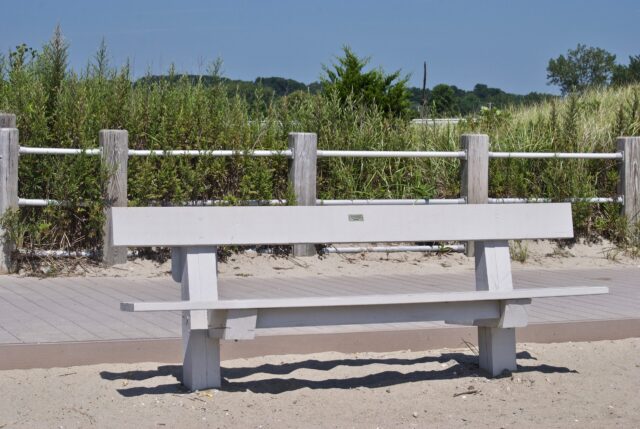
That is something else to think about. If most people enjoy natural areas, why have we allowed so much private development in these spaces, limiting public access? If we care about the environment, why do we resist change like living several blocks away from the shore instead of right on it, particularly in areas with high population density?
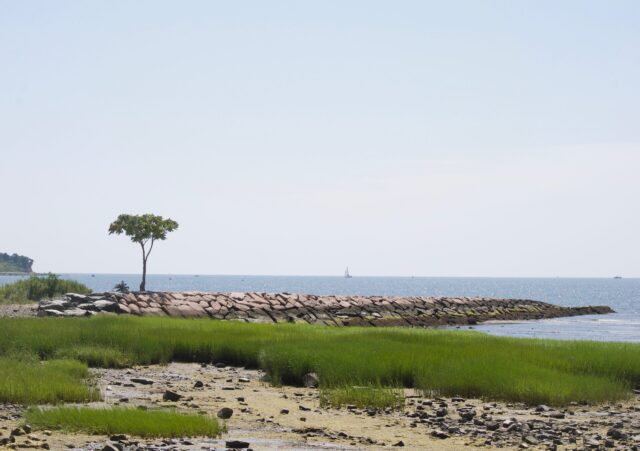
There are those who do, and did, care. In 1968, the Hartford Courant published a longish piece by Stan Simon: “Civilization Buries Birthplace of Life, Threatens Future.” He begins: “Cement highways, asphalt parking lots, and buildings are burying the birthplace of life itself. This insidious movement of civilization could eventually choke off life in the oceans and dry up diminishing water supplies. Ironically, it could also cause flooding.” This commentary on ravaged tidal marshes 55 years ago is chilling because we are here. Everything he worried about has begun to occur globally, if not right on Long Island Sound.
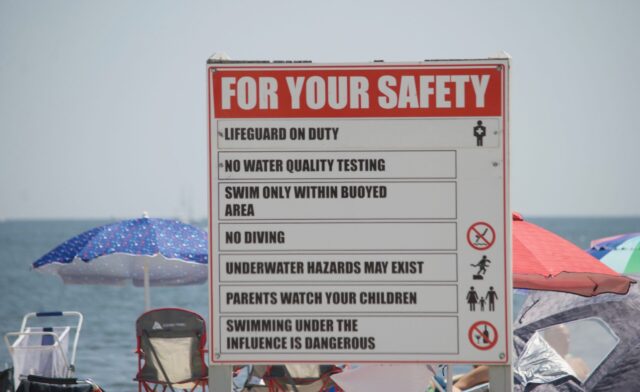
He writes, “To most, the marsh is a menace, a wasteland which should be reclaimed for more taxable income by dredging and filling for roads, parking lots, housing developments, factory sites, and marinas.”
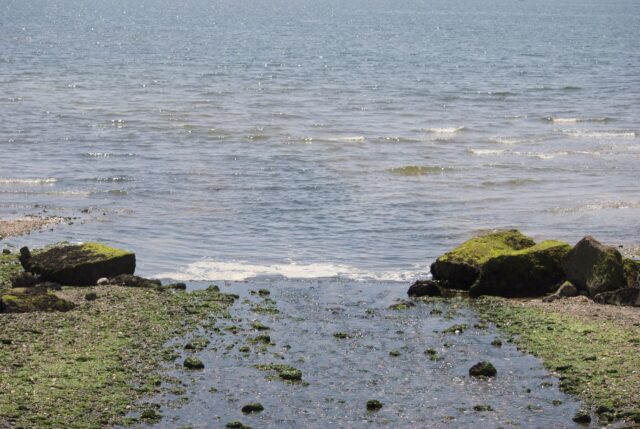
That mindset has shifted considerably, but I recall hearing those sentiments in the 80s and 90s — the idea that the presence of a stream was not reason enough for someone to be denied a building permit. We have not quite socially evolved to be in a horizontal power sharing relationship with the rest of nature, but we have had more than a few wake up calls to suggest we ought to move in that direction instead of maintaining the erroneous belief that humans have a God-given right to dominate nature.
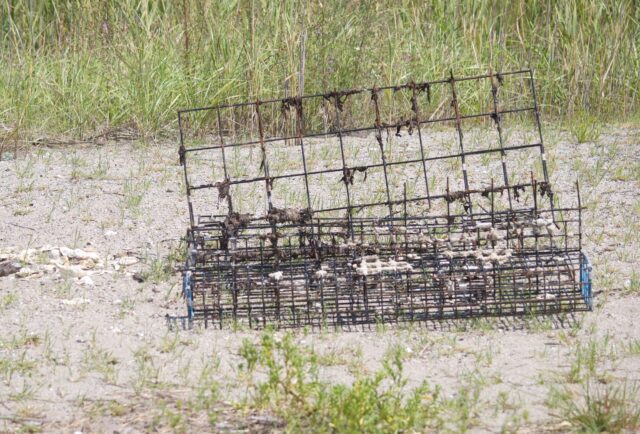
In that article, State Board of Fisheries & Game Director Theodore Bampton was quoted as saying: “Every time an onshore storm hits hard, you hear of homes on the coast that have to be evacuated. It’s more than likely they were built on filled marshes.”
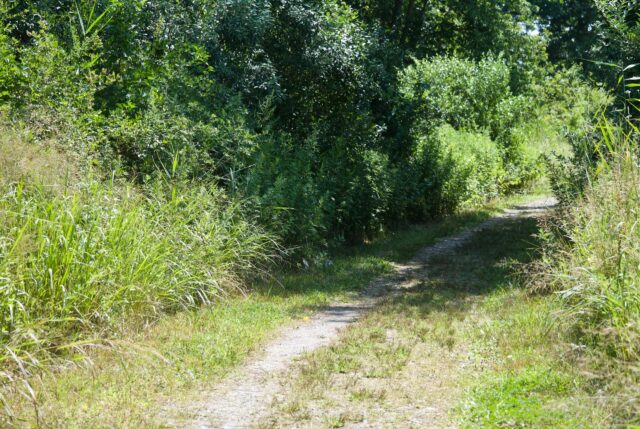
It’s an unspoken rule that you’re not allowed to question where people are already living or suggest it is a bad idea to live there. Doing so is a quick way to get booed out of the room, even if deep inside people understand that building and rebuilding in areas prone to hazards like flooding and wildfires is, at minimum, an expensive endeavor. There is precedent for removing people found to be living in dangerous areas; you can make the case that living right on the coast in the Anthropocene is no less hazardous than living alongside railroad tracks. We could ask why it’s acceptable to evict some with ten days notice, while others we can’t even ask to consider moving a bit inland. We could ask, but we know what this difference in treatment is about.
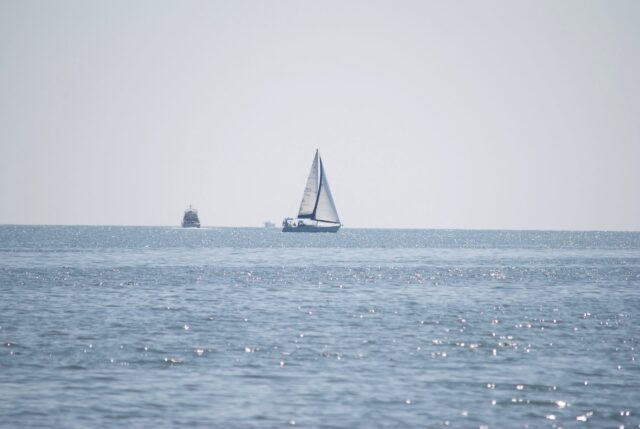
The continued expense of living on the coast is something for insurers to decide, though it should be a broader conversation: when do we say “enough” to building homes, malls, parking lots, and highways in environmentally sensitive areas, and when do we say it might be time to relocate those already in existence — including those with properties valued around a million bucks? When do we do some personal accounting and ask ourselves tough questions about our relationship with stuff?

In the meantime, what we should aim for is how to send the message that a place is to be respected. One way to begin with that is to make more available and convenient public transportation to the place, while normalizing the act of people riding the bus. Better bus systems mean having less traffic on the road. Buses are in fewer crashes than private vehicles, and it’s a safer way to travel regardless: “in the USA, fatality rate for car occupants were found to be 23 times higher than those for bus.” Why wouldn’t we want less strain on emergency services, less death, and less destruction in our communities?
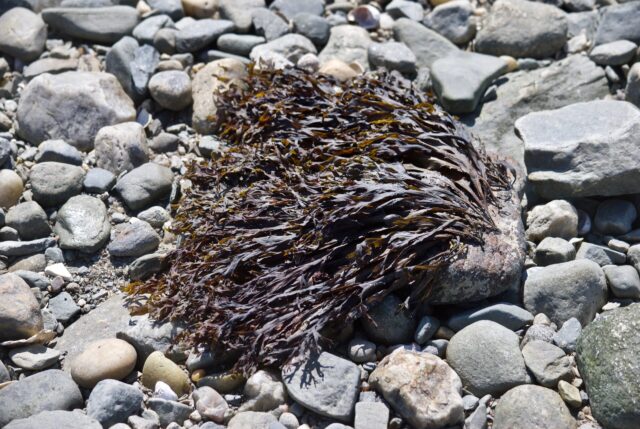
Another way to signal respect for a place is by simply being more of a positive force.
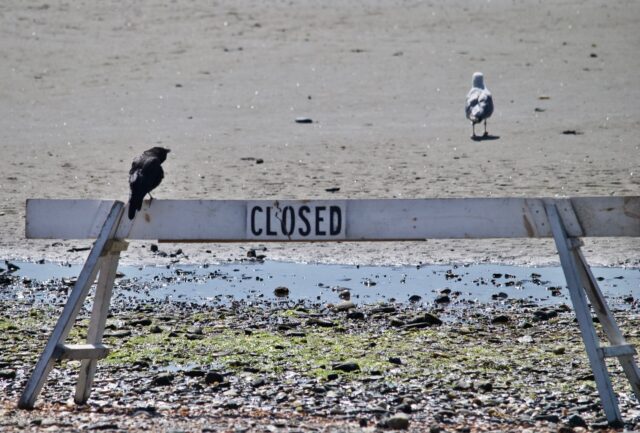
There is some of that happening in Milford. A clean beach kiosk straddles the space near where Silver Sands meets Walnut Beach.
If you’re not a local who is tuned into this story, your first reaction to this sign may be “Oh no!” because usually when we see a photo of a young person or something named after them, it’s because it’s in memory of them. Thankfully, this is an exception. Mackenzie is one of the few to get recognition of this kind while being alive.
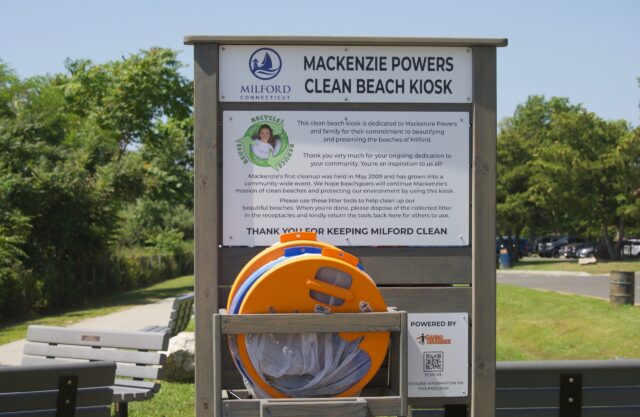
What’s the deal with this? A local child was really into picking up litter. Not everyone’s obsessed with Barbie, okay? She was so into it that she sucked others into her hobby by organizing beach clean ups. This year marked the 15th and final annual beach clean up, at least as organized by her. But for anyone feeling the desire to make the shoreline look nicer, tools are provided at the kiosk.
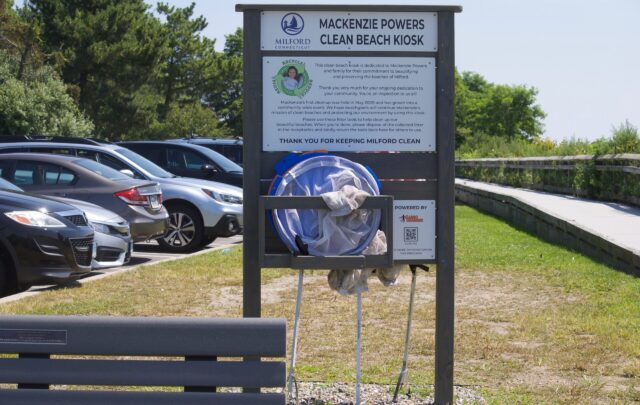
It could be a simple feel good story, but it really acts as a model others could follow: be useful, find ways to engage people, model positive behavior, and leave things better than you found them. Also: make it easy for people to do the right thing.
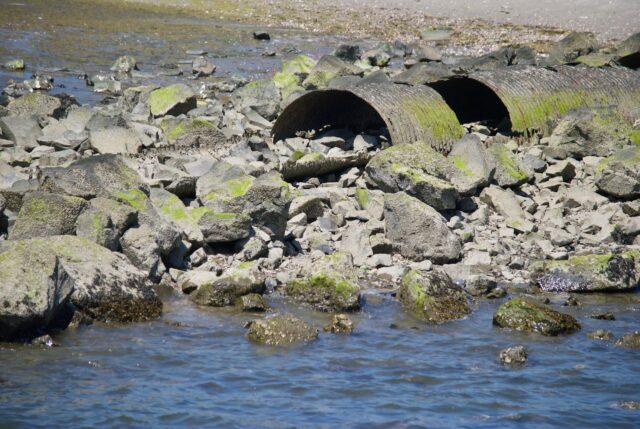
What can you do in Milford besides make observations about transportation or clean up litter?
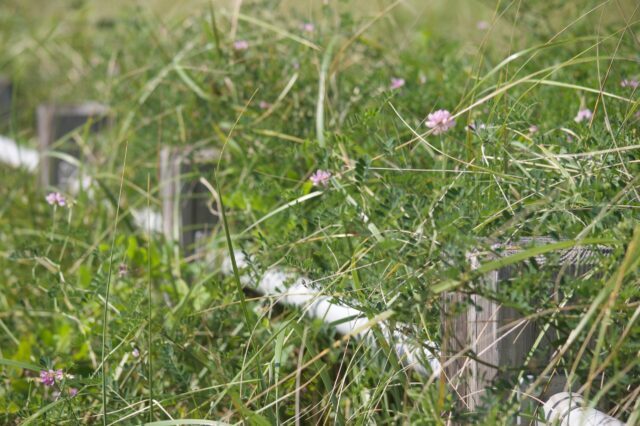
There’s the long boardwalk with plenty of seating.
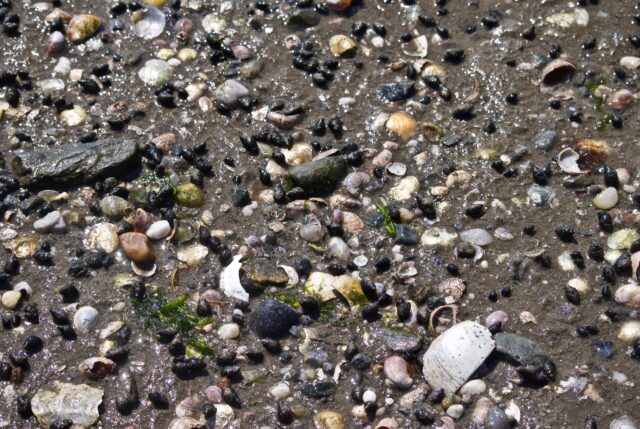
There’s looking at shells in the sand or trying to find a spot on the beach for a blanket.
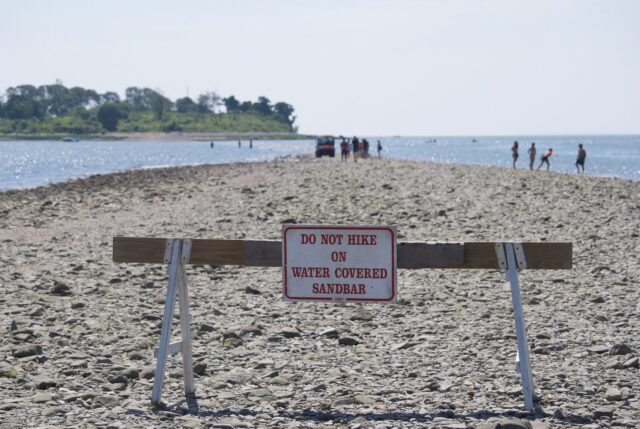
And there is the famous sandbar, or “tombolo” if you’re fancy.
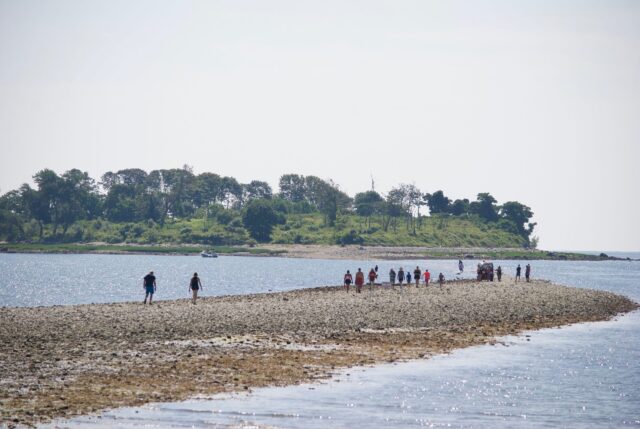
When the tide is low, you can walk on this to Charles Island, though the island is closed to humans this year from May 1 through September 9 so that the nesting birds aren’t bothered. While ParkConneCT ends on Labor Day, there is bus service some days of the week between the train station and the beach, and off-season makes for better weather anyway.
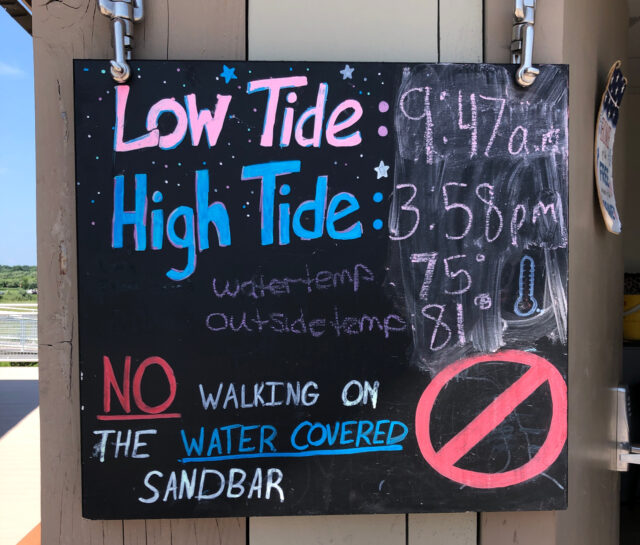
Just look up the times in advance and remind yourself by checking out the sign by the lifeguard office.
Before coming, I assumed the tombolo would be somewhere off to the side, maybe slightly challenging to access. It’s not. The path is front and center, impossible to miss. Unlike a jetty, it’s not high up, making it doable for those of us whose knees buckle at the thought of sliding off rocks.
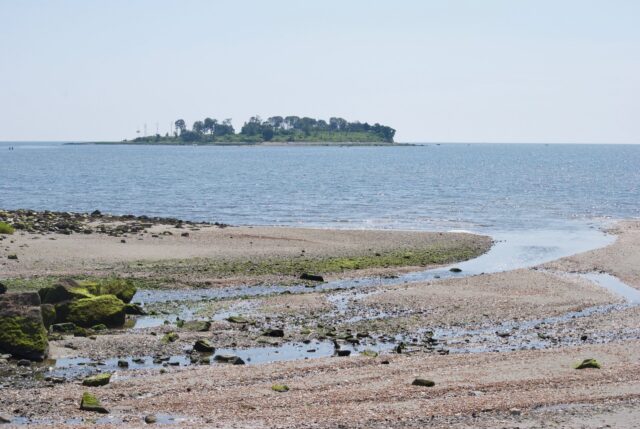
Why would you want to walk out to the island?
Because it’s there.

So much seems to be in competition for our attention, time, and money. We can choose how to spend each of these to a large extent. Will we spend it endlessly scrolling on screens? Will we give our personal resources to hunting for things, and then later in life, decluttering those things? Will that hunt include ever-larger, ever-more expensive things, like massive vehicles and homes with desirable zip codes?
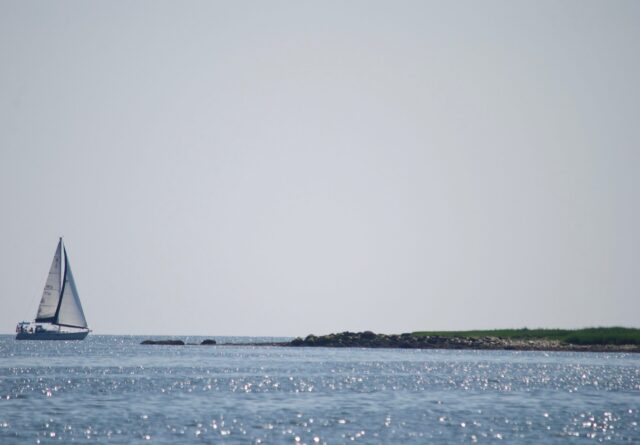
We can slow down a bit and appreciate what is right here, now. We can be present and listen to what is around us.
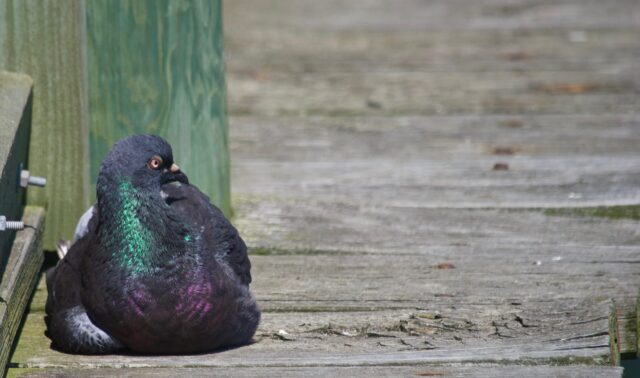
We can do all that while still being the them that a few grumps would like to keep out of their towns. And why? Because we tend to not destroy what we actually care about. By forming relationship with a place, people are going to be less likely to intentionally litter and engage in other thoughtless behaviors.
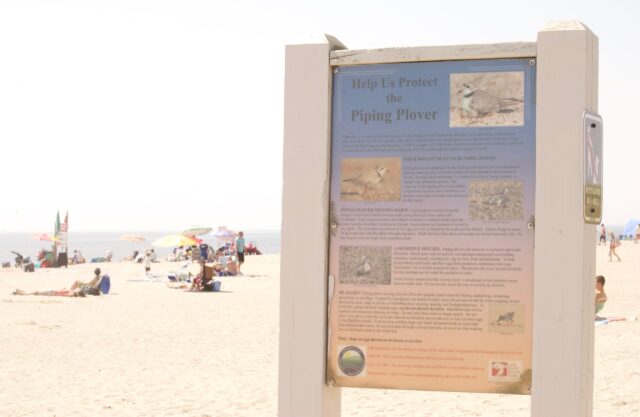
Milford’s Walnut Beach and Silver Sands State Park are both attractive, even though out-of-towners can access them, with or without a park shuttle.
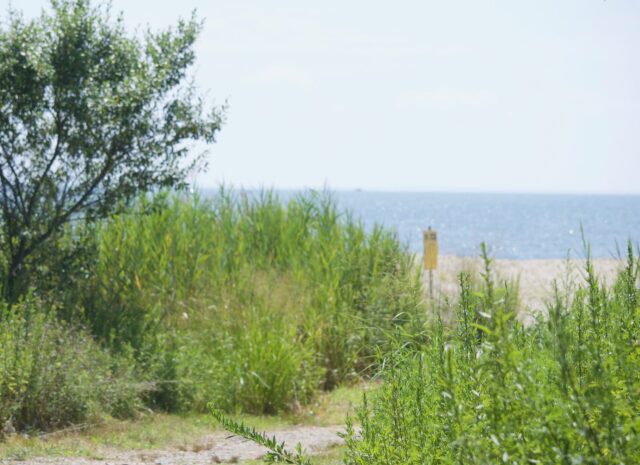
The same can be said of other spaces in town, though the train station bike lockers specifically could use some love (love shaped like a trash picker). Train station in general? Clean. Town green? Didn’t see so much as a cigarette butt. Around restaurants where you might expect to see litter? Also fine.
Were those anxieties about visitors creating litter overstated? Are there other militant litter picker uppers around town? I don’t know, but I didn’t even see a random sandal or chip bag along the East Coast Greenway.
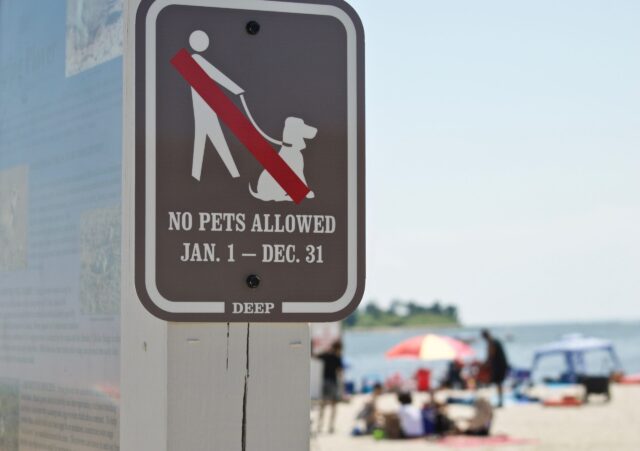
Another place to visit within walking distance of the train station is Wilcox Park, with half a mile of wooded trail next to Milford Harbor. The East Coast Greenway also goes through this small park.

If eating from the concession stand at the beach doesn’t do it for you, there are a few options by the train station.
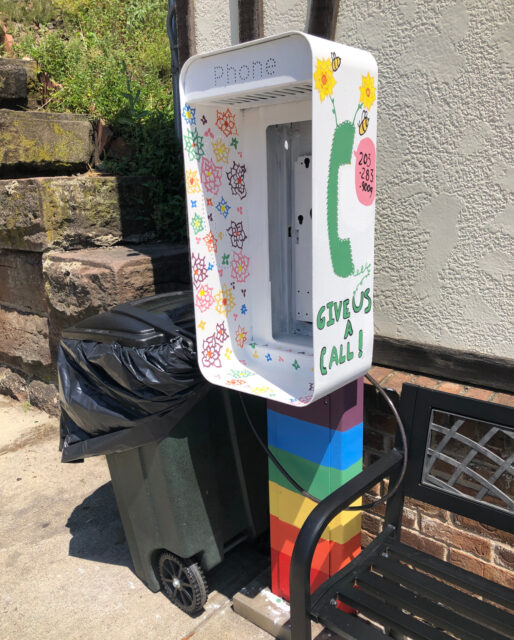
Ironically, the area right around the station is not the most pedestrian-friendly, though it’s not a hot mess stroad. Keep that in mind.
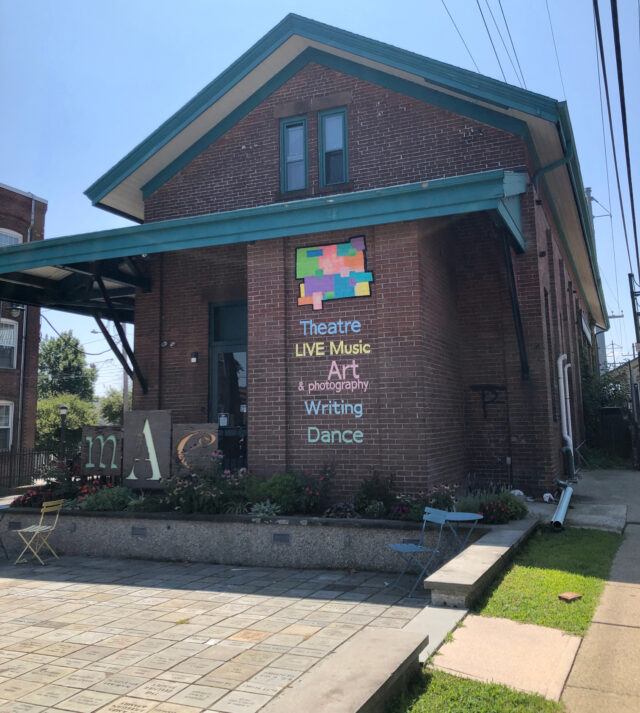
There’s weirdly no sidewalks on one side of the station. If you have this knowledge in advance, you can easily make your way to where the sidewalk happens to be, but if you are here for the first time coming from points east, you would not immediately realize this.
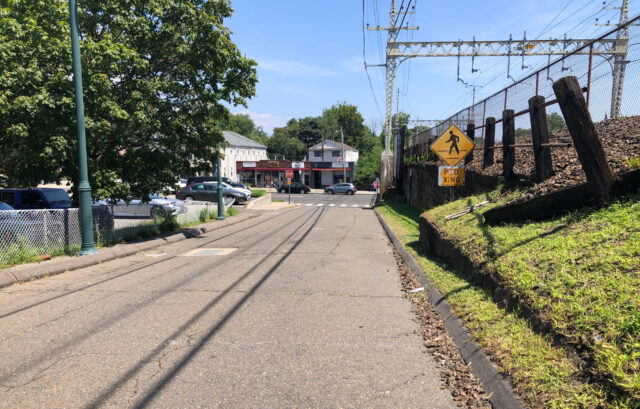
But if you make it out of the train station area in one piece, there are crepes (and healthier options) at Cafe Atlantique where you can sit by the window and watch drivers texting and FaceTiming. By the green, Scratch Baking, a bakery with some patio seating.

Here is the obligatory Milford Town Green photo:
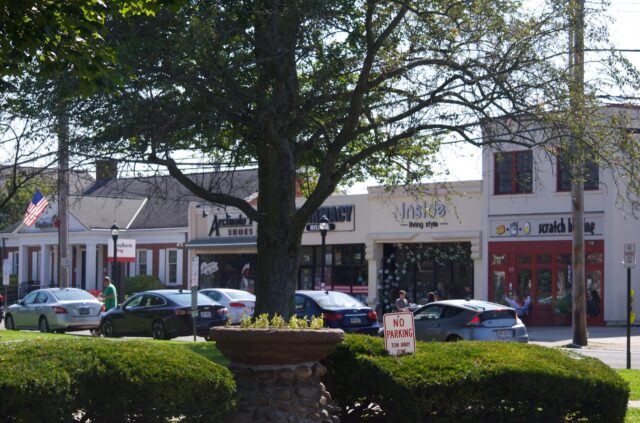
Okay, the Milford Green is much longer than that, but I was here for sand, not lawn.
Getting There:
Use Milford Station on the New Haven Line. It’s about ten minutes from New Haven, with only one station between the two.
In addition to the free Silver Sands Shuttle (weekends and holidays only from Memorial Day to Labor Day), there’s Milford Transit District route 3 between train station and Silver Sands State Park on weekdays and Saturdays, for a fee.
Beyond Hartford: Milford
[First time visitor? Coming here directly? Stop and learn about the Beyond Hartford, Beyond Cars series before reading on]
I’m not saying that a state park’s parking lot next to a closed landfill is the reason to visit Milford, but take notes on it while you’re here. You can do that without even parking in it.
A construction project at Silver Sands State Park began in 2018: new concessions building, restrooms, and lifeguard office. This was also a chance to reconfigure some of the parking, and while they did not reduce it from 713 spots to 100, which would be reasonable to me, most of the new spaces are grassed, not paved. If you want less flooding, use less pavement. The other benefit, in my mind, is that when we all agree that this amount of parking is unreasonable, it’ll be easier to convert the grassed section to simply be park, not parking.
The lot’s also way the heck over there, and if you want to drive to this park, you can use the long pedestrian bridge from the lot to the boardwalk (unless you are using one of the reserved parking spaces). Hope you brought water and a compass for that trip. For some comparison, that’s nine or ten paved spaces along with the existing turnaround at Silver Sands, with all the remaining parking on the other side of wetlands, while the neighboring park — Walnut Beach — has oodles of paved parking spaces right up against the boardwalk. Oodles = just look at Google Map aerial view and see for yourself. The change from one park to the next is striking because suddenly, even though you’re on the same boardwalk, it feels much hotter. Why? You’re walking close to often idling vehicles parked right by the walkway, and also getting heat from the pavement. “Because that’s the way we’ve always done it” is never a sufficient reason.
I will talk about things other than parking and transportation, but I need to explain why I was here on the weekend during peak tourist season: ParkConneCT. Unfortunately, the Silver Sands Shuttle does not operate on weekdays or off-season — both times I would have chosen for myself.
After not being able to use ParkConneCT at all last year for trips east of New Haven because the shuttle service did not play nice with Shore Line East’s too limited service (combined with Hartford Line not exactly meshing with Shore Line East schedule) I felt that I owed the program another chance.
The positive stuff first: it got me where I wanted to go, for free, and dropped me off right at the boardwalk. The feeling of that is like riding a bike through city rush hour and leaving everyone in cars in your dust. The shuttle bus was clean, air conditioned, had seat belts, and the driver was cool.
The less positive: I do not enjoy mysteries. There were three of these Free Shuttle signs in the train station parking lot, which indicated that I was in the correct lot, but there were no bus stop signs. None of the stops described on the map had signs– at least none that we passed. The document online with map and schedule was a few years old, so I was unsure if these stops or times were current. When the shuttle did not show up as scheduled, I called the number on the sign as I stood under a tree in this commuter lot — no benches, no bus shelter. People coming out of their cars looking at me like I was up to shady business for loitering in a commuter lot. Nobody works at Milford Transit except the drivers, I guess, on the weekend. Eventually, I was able to listen to a recorded description of the shuttle route and schedule, but it said this was for the 2021 season. The trip I am writing about here and now happened in 2023. I should also explain that at the time of the trip, the Silver Sands Shuttle was not appearing in the Transit App, so I could not track. I’m not going to be mad about a free shuttle being a bit off schedule — I just want some assurance that this thing exists and is indeed coming. There’s a difference between “looks like driver hit traffic or needed a rest stop” and “did this service expire?”. I could’ve sat on a bench across the street at the train station and eaten my snack. I am one impatient person; how would someone with other impatient people in their company manage this? How about someone who never takes public transportation and this is their first experience doing so?
After waiting about fifteen minutes beyond the time the shuttle was supposed to arrive, I began walking what was going to be a long, humid two mile trip. Luckily, just as I reached the sidewalk I saw the shuttle on its way, and saved myself annoyance and blisters. I had already walked from my house to the station in Hartford, was planning to walk around a lot by the water, then a bit in town, and then would be walking again from Hartford Union Station to my house. Adding another four miles to that would be unenjoyable, and this was supposed to be a relaxing day, even if I knew I would be writing about it.
The day I went was what most people would consider a perfect beach weather day, yet the shuttle was extremely underutilized. If the ParkConneCT people are running this program just to check off a box, then of course sharing my user experience won’t matter, but if they want to see more ridership there are basic things to consider: update the schedule info to reflect the season, include useful details like where exactly stops are or that riders should flag down buses, and find a way to communicate where shuttles are in real time. If a person can hail the bus anywhere in the vicinity of a stop, publicize that. Not every person who would use this service has a choice between shuttle and personal vehicle, but for those that do, you want to make it less of a hassle to use greener transportation than their own car.
Anyway, more and more, I want to know why there aren’t bike rentals at all train stations and larger transit hubs. There are bicycle lockers, but if any rental options were available, they did not make themselves known to me.
The East Coast Greenway goes through Milford, and some of it through Silver Sands State Park. Some of the roads in Milford are dangerous, but if coming from the train station, once you cross Route 162/Broad Street, there are many quiet roads to ride on and it’s fairly flat.
This is a car-free section of the East Coast Greenway in the park.
The construction project at Silver Sands has been an ordeal — some of which made for better results. I said construction began in 2018, but the process to get there started earlier when the 2012 Bond Commission allocated funds for design, and likely earlier than that.
The physical work of construction finally began in 2018. In March 2019, two fires — at least one of which was intentionally set — destroyed the almost-completed new buildings, along with building materials in storage containers. It was only this past spring that the arsonist, who was involved in setting several other fires around the state, was given a five-month probation sentence.
Besides the waste of natural resources and that of workers’ time (who wants to see their efforts destroyed?), this meant needing to stop everything to check for environmental impact, clearing the debris, and then starting again. Over $3 million in damage on a project that was needlessly controversial from the beginning. Work did not restart until January 2020.
There were the standard attempts to prevent park improvements, including those coming from folks who wanted to keep a State Park as something only town residents could use. The funny thing is that some who opposed the project had a change of heart when they saw the results. If you follow stories about development, this is not surprising at all, but something reporters should be required to put in every news article in some way: listen for which project critiques are informed, and which are driven by a fear of change or attempt to hoard resources. (Some of the concerns were grounded, but many, not so much. At least one person wanted a wall to keep people out. What?!)
If resistance is truly about environmental impacts, we should be seeing robust pro-environmental actions taken elsewhere, such as banning all except ADA accessible parking from parks, such as making dramatic improvements to the public transportation system, narrowing roadways (Route 1 through Milford has 5 lanes. Why?) . . . make changes that are not simply about keeping people out.
A 1955 hurricane destroyed homes along the shore. Shortly after, the State of Connecticut began purchasing these and other properties– around 300 parcels in all. Silver Sands became a park in 1960, greatly expanding on the existing beach and access to it.
That is something else to think about. If most people enjoy natural areas, why have we allowed so much private development in these spaces, limiting public access? If we care about the environment, why do we resist change like living several blocks away from the shore instead of right on it, particularly in areas with high population density?
There are those who do, and did, care. In 1968, the Hartford Courant published a longish piece by Stan Simon: “Civilization Buries Birthplace of Life, Threatens Future.” He begins: “Cement highways, asphalt parking lots, and buildings are burying the birthplace of life itself. This insidious movement of civilization could eventually choke off life in the oceans and dry up diminishing water supplies. Ironically, it could also cause flooding.” This commentary on ravaged tidal marshes 55 years ago is chilling because we are here. Everything he worried about has begun to occur globally, if not right on Long Island Sound.
He writes, “To most, the marsh is a menace, a wasteland which should be reclaimed for more taxable income by dredging and filling for roads, parking lots, housing developments, factory sites, and marinas.”
That mindset has shifted considerably, but I recall hearing those sentiments in the 80s and 90s — the idea that the presence of a stream was not reason enough for someone to be denied a building permit. We have not quite socially evolved to be in a horizontal power sharing relationship with the rest of nature, but we have had more than a few wake up calls to suggest we ought to move in that direction instead of maintaining the erroneous belief that humans have a God-given right to dominate nature.
In that article, State Board of Fisheries & Game Director Theodore Bampton was quoted as saying: “Every time an onshore storm hits hard, you hear of homes on the coast that have to be evacuated. It’s more than likely they were built on filled marshes.”
It’s an unspoken rule that you’re not allowed to question where people are already living or suggest it is a bad idea to live there. Doing so is a quick way to get booed out of the room, even if deep inside people understand that building and rebuilding in areas prone to hazards like flooding and wildfires is, at minimum, an expensive endeavor. There is precedent for removing people found to be living in dangerous areas; you can make the case that living right on the coast in the Anthropocene is no less hazardous than living alongside railroad tracks. We could ask why it’s acceptable to evict some with ten days notice, while others we can’t even ask to consider moving a bit inland. We could ask, but we know what this difference in treatment is about.
The continued expense of living on the coast is something for insurers to decide, though it should be a broader conversation: when do we say “enough” to building homes, malls, parking lots, and highways in environmentally sensitive areas, and when do we say it might be time to relocate those already in existence — including those with properties valued around a million bucks? When do we do some personal accounting and ask ourselves tough questions about our relationship with stuff?
In the meantime, what we should aim for is how to send the message that a place is to be respected. One way to begin with that is to make more available and convenient public transportation to the place, while normalizing the act of people riding the bus. Better bus systems mean having less traffic on the road. Buses are in fewer crashes than private vehicles, and it’s a safer way to travel regardless: “in the USA, fatality rate for car occupants were found to be 23 times higher than those for bus.” Why wouldn’t we want less strain on emergency services, less death, and less destruction in our communities?
Another way to signal respect for a place is by simply being more of a positive force.
There is some of that happening in Milford. A clean beach kiosk straddles the space near where Silver Sands meets Walnut Beach.
If you’re not a local who is tuned into this story, your first reaction to this sign may be “Oh no!” because usually when we see a photo of a young person or something named after them, it’s because it’s in memory of them. Thankfully, this is an exception. Mackenzie is one of the few to get recognition of this kind while being alive.
What’s the deal with this? A local child was really into picking up litter. Not everyone’s obsessed with Barbie, okay? She was so into it that she sucked others into her hobby by organizing beach clean ups. This year marked the 15th and final annual beach clean up, at least as organized by her. But for anyone feeling the desire to make the shoreline look nicer, tools are provided at the kiosk.
It could be a simple feel good story, but it really acts as a model others could follow: be useful, find ways to engage people, model positive behavior, and leave things better than you found them. Also: make it easy for people to do the right thing.
What can you do in Milford besides make observations about transportation or clean up litter?
There’s the long boardwalk with plenty of seating.
There’s looking at shells in the sand or trying to find a spot on the beach for a blanket.
And there is the famous sandbar, or “tombolo” if you’re fancy.
When the tide is low, you can walk on this to Charles Island, though the island is closed to humans this year from May 1 through September 9 so that the nesting birds aren’t bothered. While ParkConneCT ends on Labor Day, there is bus service some days of the week between the train station and the beach, and off-season makes for better weather anyway.
Just look up the times in advance and remind yourself by checking out the sign by the lifeguard office.
Before coming, I assumed the tombolo would be somewhere off to the side, maybe slightly challenging to access. It’s not. The path is front and center, impossible to miss. Unlike a jetty, it’s not high up, making it doable for those of us whose knees buckle at the thought of sliding off rocks.
Why would you want to walk out to the island?
Because it’s there.
So much seems to be in competition for our attention, time, and money. We can choose how to spend each of these to a large extent. Will we spend it endlessly scrolling on screens? Will we give our personal resources to hunting for things, and then later in life, decluttering those things? Will that hunt include ever-larger, ever-more expensive things, like massive vehicles and homes with desirable zip codes?
We can slow down a bit and appreciate what is right here, now. We can be present and listen to what is around us.
We can do all that while still being the them that a few grumps would like to keep out of their towns. And why? Because we tend to not destroy what we actually care about. By forming relationship with a place, people are going to be less likely to intentionally litter and engage in other thoughtless behaviors.
Milford’s Walnut Beach and Silver Sands State Park are both attractive, even though out-of-towners can access them, with or without a park shuttle.
The same can be said of other spaces in town, though the train station bike lockers specifically could use some love (love shaped like a trash picker). Train station in general? Clean. Town green? Didn’t see so much as a cigarette butt. Around restaurants where you might expect to see litter? Also fine.
Were those anxieties about visitors creating litter overstated? Are there other militant litter picker uppers around town? I don’t know, but I didn’t even see a random sandal or chip bag along the East Coast Greenway.
Another place to visit within walking distance of the train station is Wilcox Park, with half a mile of wooded trail next to Milford Harbor. The East Coast Greenway also goes through this small park.
If eating from the concession stand at the beach doesn’t do it for you, there are a few options by the train station.
Ironically, the area right around the station is not the most pedestrian-friendly, though it’s not a hot mess stroad. Keep that in mind.
There’s weirdly no sidewalks on one side of the station. If you have this knowledge in advance, you can easily make your way to where the sidewalk happens to be, but if you are here for the first time coming from points east, you would not immediately realize this.
But if you make it out of the train station area in one piece, there are crepes (and healthier options) at Cafe Atlantique where you can sit by the window and watch drivers texting and FaceTiming. By the green, Scratch Baking, a bakery with some patio seating.
Here is the obligatory Milford Town Green photo:
Okay, the Milford Green is much longer than that, but I was here for sand, not lawn.
Getting There:
Use Milford Station on the New Haven Line. It’s about ten minutes from New Haven, with only one station between the two.
In addition to the free Silver Sands Shuttle (weekends and holidays only from Memorial Day to Labor Day), there’s Milford Transit District route 3 between train station and Silver Sands State Park on weekdays and Saturdays, for a fee.
Related Posts
Guide to Crying in Public in Hartford
Updates on Hartford Transportation Initiatives at City Council’s Planning and Economic Development Committee: Whizzing Through the City at 110 MPH
Incoming!